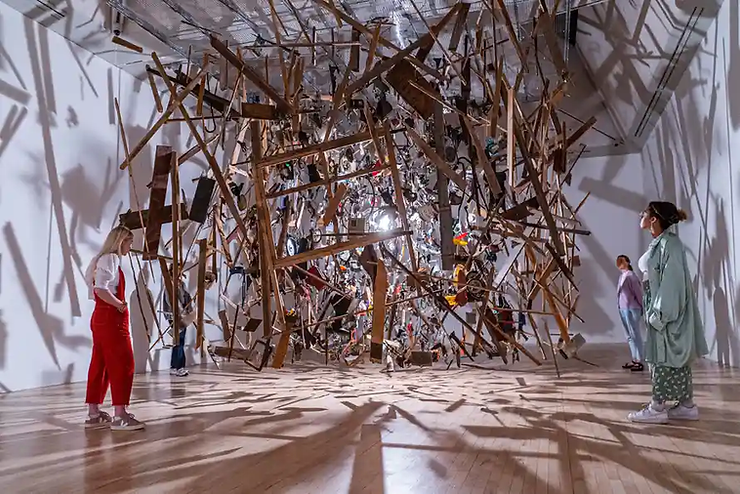By: Michael Chuang
A new exhibit opens in London displaying British artist Cornelia Parker’s exceptional masterpieces.
Born in 1956 in Cheshire, England, the artist is one of three daughters of a physically abusive father. As a child, she used to place coins on a nearby railway just to watch the coin be run over by a passing train. Kelly Grovier said that “Parker did not simply squash a penny. She minted an imagination.”
Since the 1980s, Parker has created many extraordinary contemporary art pieces. Some were created by steamrollers, snake venom, and explosives. Tate Britain, an art exhibit located in London, displays nearly 100 of Parker’s sculptures, installations, drawings, films, and photographs. It showcases a collection of more than three decades of Parker’s work.
“Everything just sort of weaves together,” Parker tells BBC Culture, reflecting on the sight of so much of her life’s creative effort gathered in one place. She says, “The Tate owns all my major works, so they just had to get them out of the old archive. I’ve got a piece where I wrap Rodin’s ‘The Kiss’ up in string. They own ‘The Kiss,’ and they’ll allow me to re-enact my work.” A crucial aspect of Parker’s art is re-enactment. In Parker’s sculpture, A Kiss with String Attached, Parker carefully wrapped a mile of string around the model. The “mile of string” is an allusion to a prank performed by French artist Marcel Duchamp who used a mile of string to web the inside of a museum.
Another famous art piece by Parker is called the Perpetual Canon. Parker utilizes an industrial press and a forklift truck to flatten 60 tubas, trumpets, coronets, and sousaphones. Then, Parker deliberately arranged the crushed instruments in a ring, just like a marching band. Parker says, “You can’t tell the objects are squished in the shadows. It’s like a ghost band…The idea of a Perpetual Canon that just keeps going on forever. It’s like the wind instruments have inhaled and never exhaled. Like they’ve just taken a breath and are in an arrested space.”
The masterpieces created by Cornelia Parker will only be on display at Tate Britain, London, until October 16 of this year.











